Sensory rooms provide us valuable educational and therapeutic opportunities by adjusting and controlling the appropriate sensory stimuli, and more especially during this time we are currently living on a global level. When it comes to safety, it is important to follow certain measures in order to safeguard everyone using the sensory spaces.
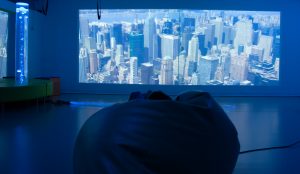
How do I Use My Sensory Room Safely?
Fortunately, the design of our multisensory products makes sanitization easy. Nevertheless, to enjoy this magnificent resource during times of Covid-19, it is important to follow some preventive measures.
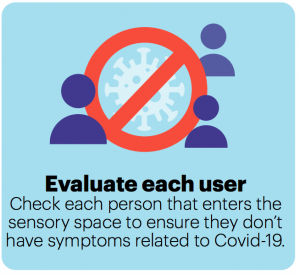
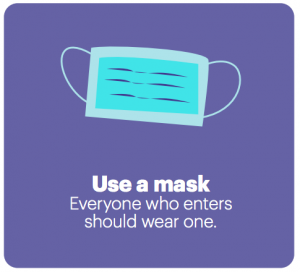
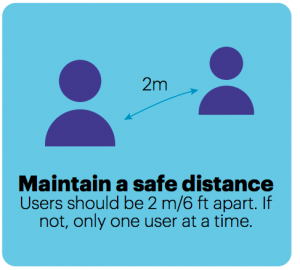
• Evaluate each user: Check each person who comes into the sensory room. Ask users if they or their relatives have had any symptoms during the past 2 weeks.
• Use a mask during the intervention or session. Every person within the room or sensory space should use a mask.
• Maintain a safe distance: The sessions must be of one user at a time or guarantee the distance of 2m/6ft apart from each other.
• Furniture in a sensory room can be cleaned with water and soap. Or, use a cover or fabric which can be changed with each use.
• The water in the bubble tube is not a risk for transmitting the virus.
• The bubble tube’s methacrylate, the fiber optics and other plastic material like tops or tactile objects, can be cleaned with a disinfectant diluted in water (approximately 70% isopropyl alcohol and 30% water).
• Electronic devices, tablets, remotes and switches can be cleaned with the same disinfectant solution and a moist cloth. First, ensure the devices are turned off.
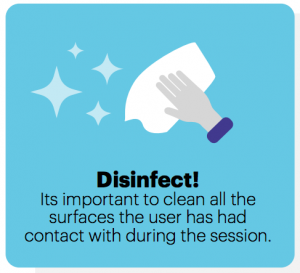
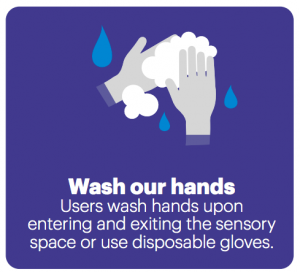
• For the ball pool, ensure 72 hours transpire between different individual’s use. Facilitators should use disposable gloves or wash their hands before and after contact with the ball pool.
• For material made out of textiles, such as swings, weighted blankets, etc., we suggest using a cover or sleeve which can later be washed, in order to protect the fabric.
• Remember there are many ways to interact in a sensory room without touching anything such as voice control, eye tracking and using one’s own personal mouse.
• Disinfect: Clean all the surfaces after each session.
• Wash hands: It is very important to wash hands before and after the session in addition to use some hydroalcoholic gel or even disposable gloves.
Use your sensory room, now more than ever!
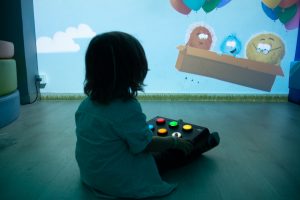
Relax and enjoy
Sensory spaces provide many tools to reduce stress and anxiety for everyone.
Pamper me
As of late, physical contact between individuals has decreased. Therefore, tactile stimulation is an important feature which can be supplemented in a sensory room. We have the opportunity to experience touch in a sensory space with weighted blankets, the Snuggle Bag, fiber optic strands and vibration.
Awaken the Sense
Being in quarantine for many people means they are receiving minimal sensory and cognitive stimulation. Fortunately, sensory spaces allow individuals to experiment with images and sounds as well as pleasant sensations, in a safe environment.
Take control
Many individuals do not have elements in their homes or bedrooms to control their immediate environment. In recent times, its possible they have been resigned to others determining their surroundings. Whereas a sensory room offers a place for the user to control the space around them, while also participating in a variety of activities within the room.
Live the Adventure
You can recreate any part of the world in a sensory room. Not only can you visit places which normally would not be accessible, you can do it with the press of a button. Travel, play a sport, go on an adventure and feel the exhilaration!
Communicating…
The need for communication has been especially important recently. Sensory environments facilitate communication via the senses and also help to learn augmentative communication methods.
Free Project Design
If you want to learn more about the benefits of Multisensory Environments or see how you could adapt it to your space, therapeutic goals, and users, you can send an email to hello@qinera.com.

Written by:
The team at Qinera
Qinera produces assistive technology for people with disabilities with the aim of improving their autonomy and life quality.
Its human team includes: occupational therapists, special education teachers, speech therapists, engineers, IT developers and experts in assistive technology.
Read more posts















